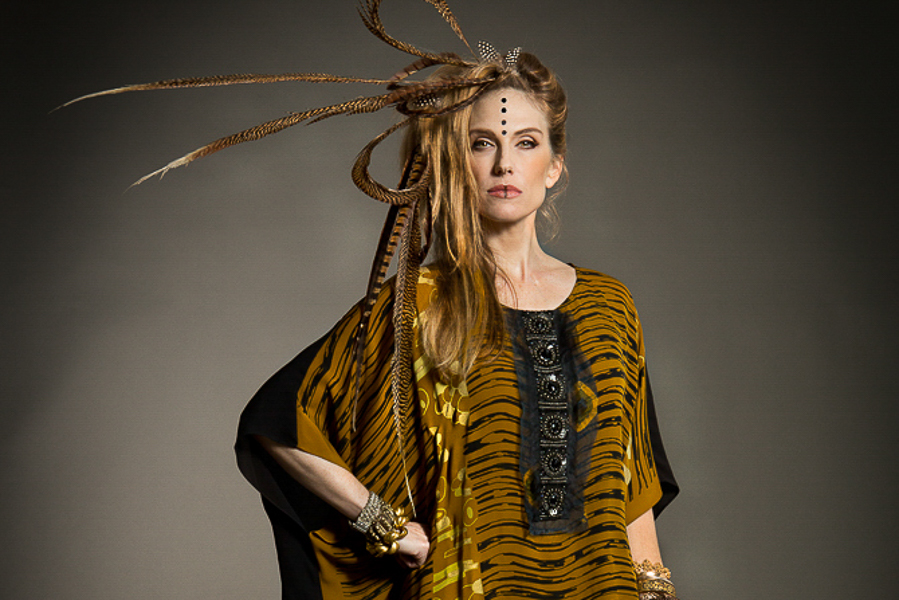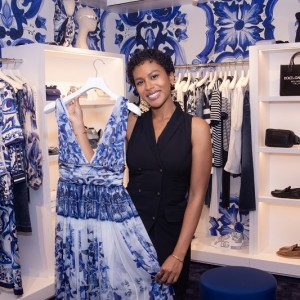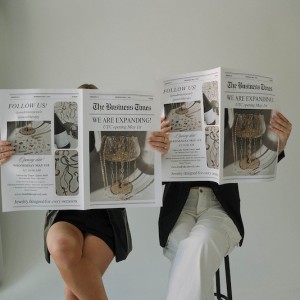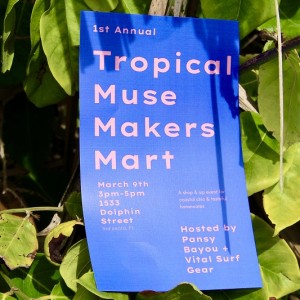A fashion hotspot on St. Armands Circle, Dream Weaver unites the styles and spirits of 14 designers into one energetic, eclectic collection that combines cutting-edge fashion and breezy beach informal. We sat down with a couple minds behind the designs to talk inspiration and philosophy, then got a sneak peek of what is coming next.
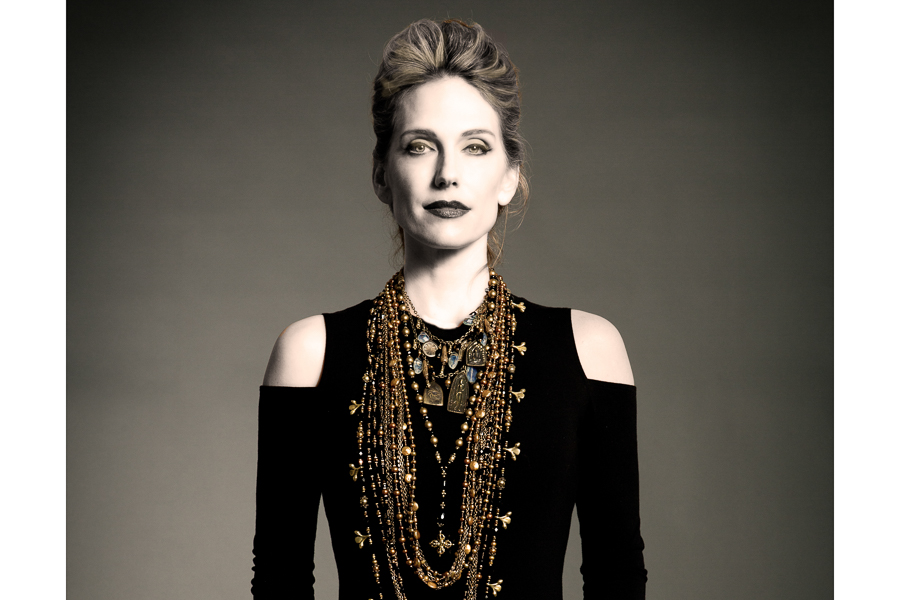
Catherine Bacon - Catherine Bacon
Is there a particular demographic you design for, or do you see your designs as having a more broad appeal? It has quite a broad appeal because I do have a collection that includes different body shapes. I know my typical customer is probably in their 40s up to any age, although recently I’ve been selling some kaftans to twenty-something-year-olds. So it’s hard to say. But it’s pretty consistent with what Dream Weaver’s population is.
Are there particular materials you find yourself drawn toward? My focus has always been on the fabric. I love silk and I really love drapey fabrics. I’m not somebody who likes architectural shapes in my own design, so I definitely use different weights and textures. Silk is my primary fabric. It has a beautiful drape and I work with a number of textile artists and collaborate with them to make collections and it just lends itself to surface painting. You take a brush or a dye and you dip the fabric and that’s painting the surface of the fabric that might otherwise just be white.
How would you typify your design philosophy? What I want to do is enhance a woman’s beauty and for someone to feel really beautiful when they wear my things. I’m always thinking about the customer and what would be beautiful on them, what’s going to be appealing in terms of color and texture. I also usually have themes for what I do and my collections change quite a lot each season. I’m not a trendy designer at all. My interest is not necessarily in the current trend. It’s much more in what a woman can buy and wear for many years. It’s timeless.
What is the importance of fashion in our lives? What clothing can do is be an expression of the person who’s wearing it. Having something hand-painted, many times someone is, themselves, creative or loves art, loves color, texture and pattern. Clothing is the way we make another statement about who we are. That to me is the main focus.
Can you give us a hint as to what’s coming? I have an indigo collection using an actual indigo vat to dye indigo color, and we have indigo and denim and a bunch of different textures and painting within that, and then a much more graphic black, white and red collection.
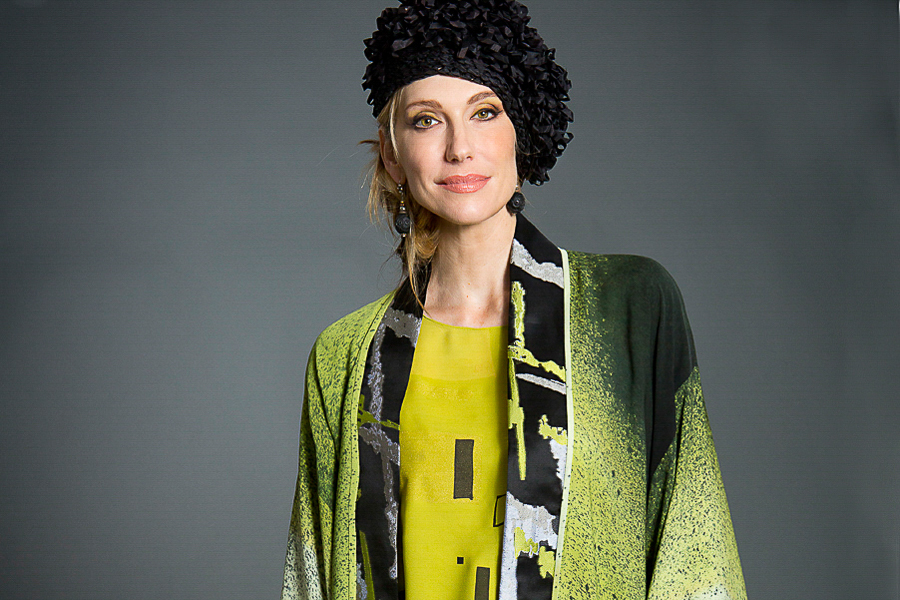

Lori Bacigalupi - Kiss of the Wolf
Do you have a particular demographic or are you a broad-spectrum designer? People who travel, who really have come to a point in their lives where they regret that they have one fabulous piece and tons of not-so-fabulous pieces that are standards in their wardrobe. We’ve sold our clothes throughout the country, so different cultures and nationalities—even various age groups. Age is more an attitude than an age. It has to be somebody who feels they can wear an independent style. They know its quality without having to see a label. They recognize it’s individual and it just needs to meet their style needs. They understand when they see it and it’s usually an immediate response.
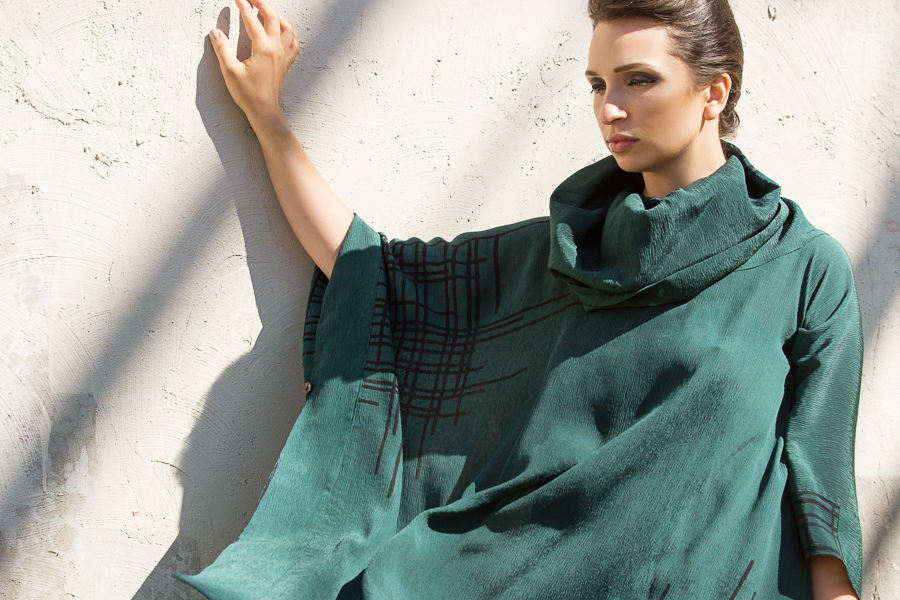
Do you have any materials that you find particularly inspirational or pleasing to work with? I’ve always been oriented toward natural fibers—protein fibers such as wool and silk, vegetable fibers such as cotton. I love natural fibers and I learned early in my career that no matter how much work I put into something or how beautiful it is, it’s only as good as the quality of the material that it’s created from, so I’ve always used the best materials that I could find. Even the insides of my coats, which you don’t see but you can feel, are all completely all-natural materials—hand-woven cottons and thin layers of either wool or batting or very light cotton and gauzes.
How would you characterize your design philosophy? What’s important in all art is what’s essential or what you deem to be essential. For me, that’s the quality of the materials and the mix-and-match ability so that it can integrate with not only other pieces of my line but also other pieces within the wardrobe of the buyer. It should be essential in that you would go to it because it’s so cozy and makes you feel so good. It has to be. Many of my clients are devoted to me and I am to them. They don’t call it Kiss of the Wolf for nothing. There is a sense of this kind of recognition that we have in each other and that we identify with.
Is essential the same thing as minimalism? Not exactly. Minimalism has an aspect of essential and I personally like minimalism, but in my garments the fabric design may be opulent. As in many things, there’s a balance. It’s not just minimal. At one point in my career, I focused on architectural shapes and how they integrated and everything was black. Everything was hand-painted and beautifully textured but black. Now I enjoy a certain amount of opulence. I enjoy painterly materials. In the styles themselves, there’s a certain minimalist aspect, but the fabric design isn’t necessarily minimal. What makes a garment interesting is that delicate spot where it’s classic and then it has a big twist. It’s a matter of balance.
What can fans look forward to seeing this season? I’ve been very strongly into mixed patterns and it’s fortunate that we have a lot of ability to do that since we’re painting and since we do several different fabric design techniques including batik and shibori and screen printing. It gives us an opportunity to experiment in different combinations. A blouse, for example, may have a thin shibori stripe, but a jacket may have an elaborate texture or a screen print with the same colors. Everything can be worn independently, yet when you put it together it’s a spectacular grouping





